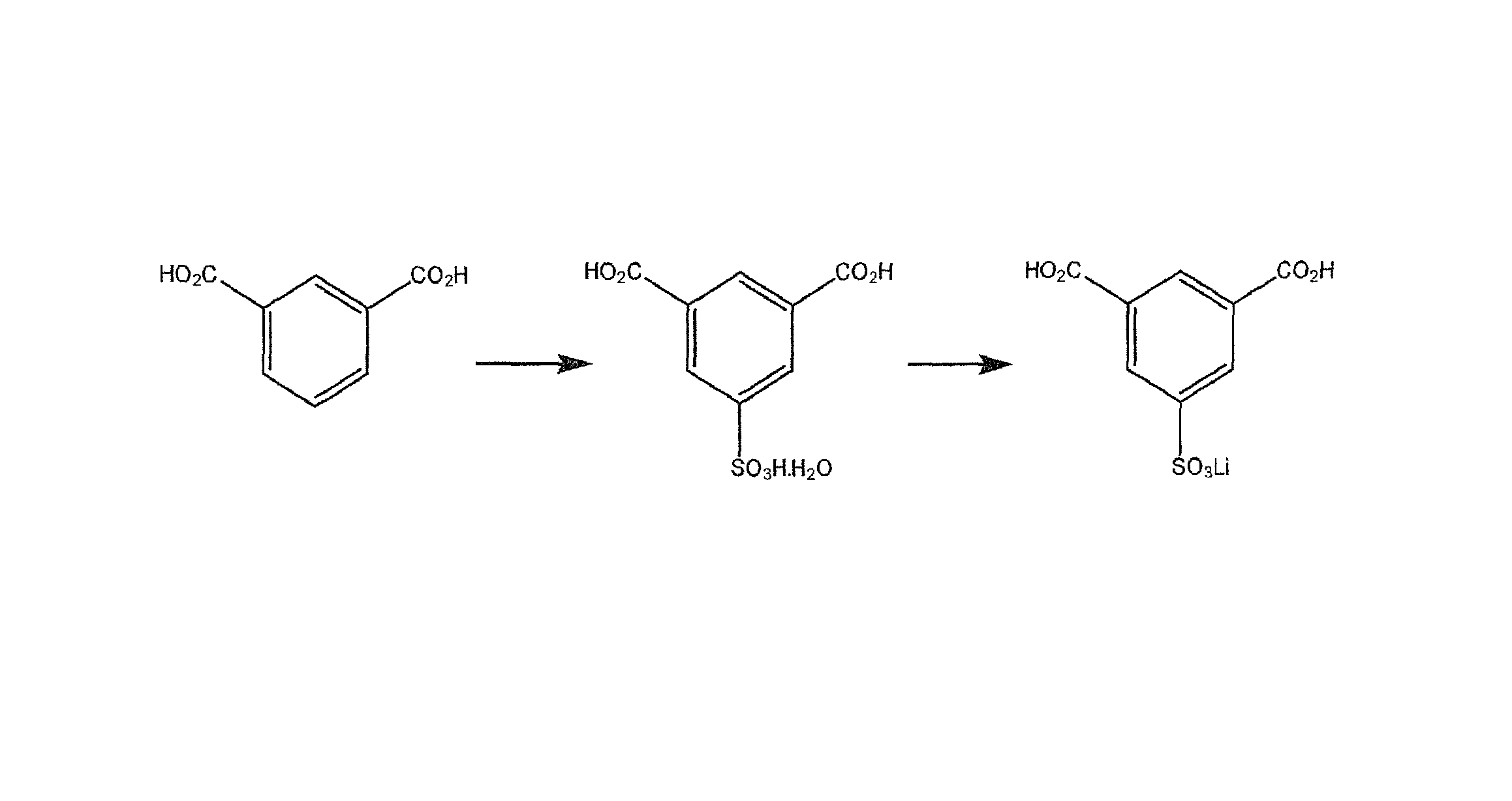Use of an acetic acid wash to prepare low-sulfate 5-sulfoisophthalic acid, mono-lithium salt
a technology of isophthalic acid and acetic acid, which is applied in the field of polymer fibers and the specialized chemicals, and the production of salt derivatives of isophthalic acid, can solve the problems of poor lightfastness, low product yield, and under-utilization of cationic dyeable nylon as a carpet fiber
- Summary
- Abstract
- Description
- Claims
- Application Information
AI Technical Summary
Benefits of technology
Problems solved by technology
Method used
Image
Examples
example 1
[0046]The following example begins with the sulfonation of isophthalic acid to form HSIPA as discussed in the detailed description. However, HSIPA is a commercially available product therefore the practice of the invention could start with HSIPA as well.
[0047]Isophthalic acid is added to excess SO3 (as 30% oleum) to form a sulfonation solution. The sulfonation solution is heated to 195° C. to 210° C. and held for about 6 hours to form HSIPA.
[0048]The sulfonation solution is cooled and drowned into a solution of water and lithium hydroxide monohydrate that is between 0° C. and 110° C. to form a solution of 5-sulfoisophthalic acid mono-lithium salt. The product is crystallized while cooling the solution to 0° C. to 25° C., thus forming a slurry of 5-sulfoisophthalic acid mono-lithium salt.
[0049]One quart slurry samples of 5-sulfoisophthalic acid mono-lithium salt from a standard plant production batch (as described above) were collected after a standard crystallization step (e.g., coo...
example 2
[0053]The following example begins with isolated HSIPA and illustrates the process according to the invention where filtrate and acetic acid washes are recovered and recycled. The HSIPA utilized in the development of this variation was isolated as a chemical intermediate after sulfonation of isophthalic acid and drowning into water as is typical in commercial HSIPA processes. The resulting drowning solution was cooled to crystallize HSIPA, which was filtered and washed with acetic acid and dried in a vacuum oven.
[0054]For the first batch in the series a 1000 ml round bottom flask was set up. Eighty (80) g of fresh deionized water was added to the flask. It should be noted that for each batch in the series 80 g total of water was used. Therefore, for the second and subsequent series in which the filtrate is recycled a small amount of fresh deionized water will be required due to process losses and the 5-7% purge. The total grams of water used in the second and subsequent batches is g...
PUM
| Property | Measurement | Unit |
|---|---|---|
| mole ratio | aaaaa | aaaaa |
| time | aaaaa | aaaaa |
| temperature | aaaaa | aaaaa |
Abstract
Description
Claims
Application Information
 Login to View More
Login to View More - R&D
- Intellectual Property
- Life Sciences
- Materials
- Tech Scout
- Unparalleled Data Quality
- Higher Quality Content
- 60% Fewer Hallucinations
Browse by: Latest US Patents, China's latest patents, Technical Efficacy Thesaurus, Application Domain, Technology Topic, Popular Technical Reports.
© 2025 PatSnap. All rights reserved.Legal|Privacy policy|Modern Slavery Act Transparency Statement|Sitemap|About US| Contact US: help@patsnap.com


